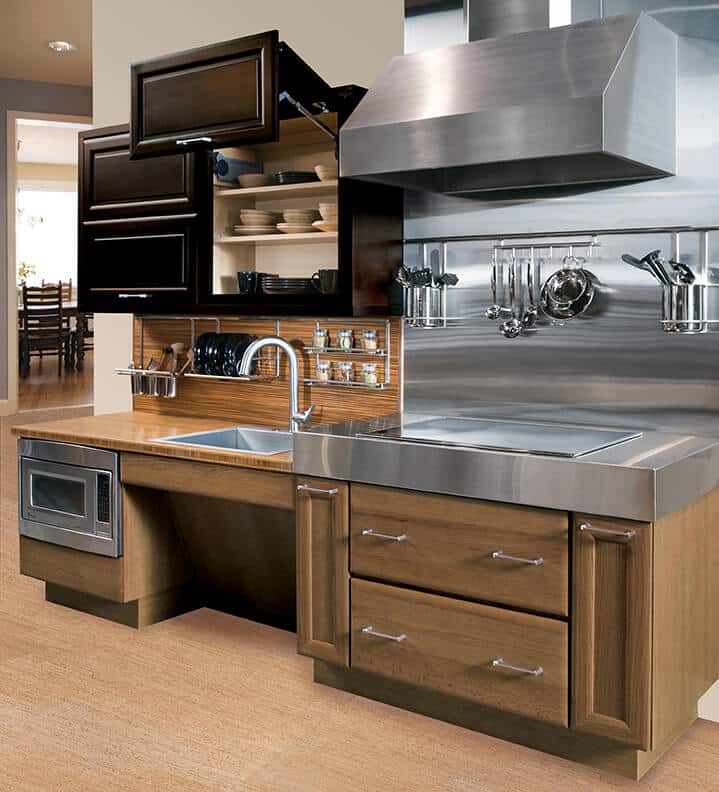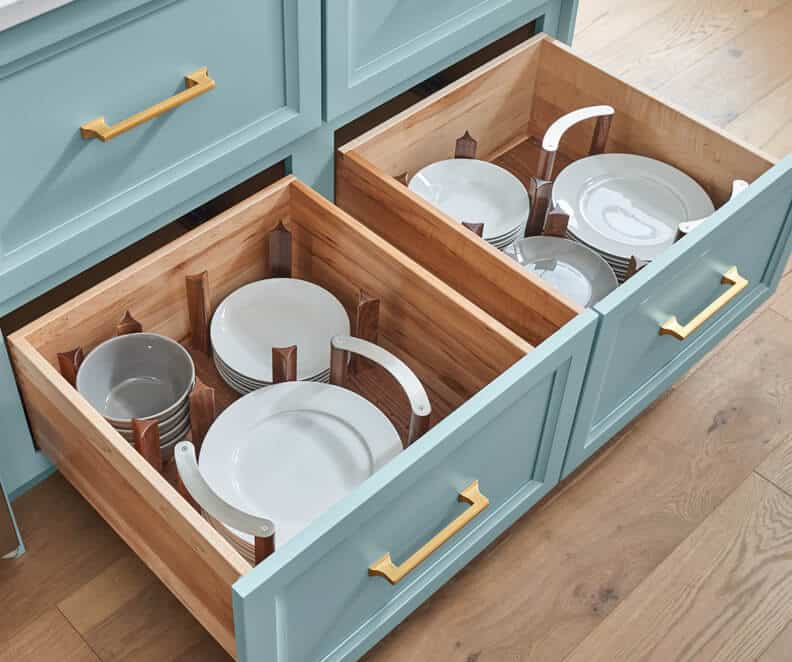
“Universal Design” and “Aging in Place Design” have gained popularity in recent years; while they are similar, they do differ quite a bit in execution.
Aging in Place design is commonly used for homeowners who require home modifications to allow them to remain in the home safely and comfortably as they age, and their physical abilities change over time.
Universal Design covers the design of needs of as many people as possible – those of different ages and abilities. The goal is to make the space convenient, secure, and operational for everyone who enters.
Browse Wellborn Cabinet’s Active Living accessories to create a home for everyone.
Aging in Place or Living in Place Design establishes a safe and secure living with design principles that consider our needs as we age. For some, the term aging in place reminds them of institutional-looking elements. Design and construction professionals prefer to use the term “aging in place.”
Aging in Place means remaining in your home throughout your senior years. Aging in Place Design considers the changes in capabilities and implements elements that will be necessary for future needs. Design choices that keep the space safe and accessible as you age include more drawers, lower appliances, lighting, pullout pantries, and accessible deep corner drawers.
When designing a space, keeping ease of use and fluidity in mind is key. Essential Aging in Place design elements include:



Universal Design refers to building design elements that make a home accessible to all people, regardless of age or ability. It is most common in new buildings, and looking ahead to future adaptability is part of the plan. The purpose is for the accessible design elements to be convenient and comfortable, but clear. Universal design is also often fitting for families with children.
Universal Design is about creating an attractive, stylish space that everyone, regardless of age, size, or ability, can live in or visit. A home with Universal Design makes it easier to live in and for guests to visit now and in the future, even as everybody’s needs and abilities change. The most common Universal Design elements include electronic opening mechanisms, multi-level surfaces, lighting, and easy-to-use handles.
When incorporating either design preference, it is vital to improving functionality by creating spaces that work for everyone’s needs.
Ready to take Aging in Place and Universal Design to the next level in your home? Contact a local Wellborn Cabinet dealer to find ways to integrate the features listed above.